History
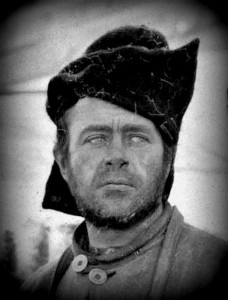
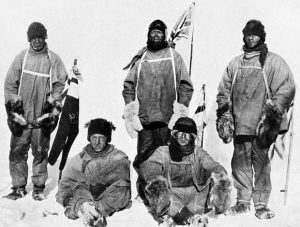 Competition is the driving force behind so many accomplishments, especially world records. On January 18, 1912, after a two-month ordeal, the expedition of British explorer Robert Falcon Scott arrived at the South Pole. Scott was a British naval officer, who began his first Antarctic expedition in 1901 aboard the Discovery. Scott spent three years exploring the area and discovered the Edward VII Peninsula, surveyed the coast of Victoria Land…which were both areas of Antarctica on the Ross Sea, and led limited expeditions into the continent itself.
Competition is the driving force behind so many accomplishments, especially world records. On January 18, 1912, after a two-month ordeal, the expedition of British explorer Robert Falcon Scott arrived at the South Pole. Scott was a British naval officer, who began his first Antarctic expedition in 1901 aboard the Discovery. Scott spent three years exploring the area and discovered the Edward VII Peninsula, surveyed the coast of Victoria Land…which were both areas of Antarctica on the Ross Sea, and led limited expeditions into the continent itself.
Soon, skirting the fringes of Antarctica was not enough, and others had taken an interest in the area too. So, in 1911, Scott and Norwegian explorer, Roald Amundsen began an “undeclared” race to the South Pole. While it was “undeclared,” it was no less a competition, and both men knew it. Sailing his ship into Antarctica’s Bay of Whales, Amundsen set up base camp 60 miles closer to the pole than Scott. In October, both explorers set off. Amundsen was using sleigh dogs and Scott used Siberian motor sledges, Siberian ponies, and dogs. Scott’s journey was fraught with mishaps. The motor sleds broke down, the ponies had to be shot, and the dog teams were sent back as Scott and four companions continued on foot. Nothing was going according to plan.
Nevertheless, on January 18, 1912, Scott’s group finally reached the pole…only to find that Amundsen had preceded them by over a month. Amundsen’s expedition won the race to the pole on December 14, 1911. Encountering good weather on their return trip, they safely reached their base camp in late January. For Scott, 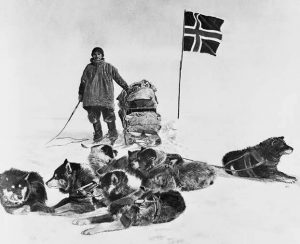
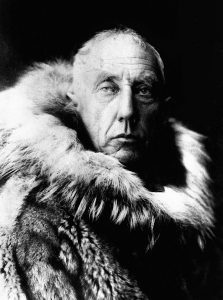 it was a day of mixed feelings, I’m sure. They made it to the pole, but they came in second. The return trip was not going to be much better, but it had to be made. The weather was exceptionally bad, and two members of the team died on the journey back to their base camp. Scott and the other two survivors were trapped in their tent by a storm, when they were just 11 miles from their base camp. Scott, who kept a journal of the trip, like most explorers did, wrote a final entry in his diary in late March. The frozen bodies of he and his two compatriots were recovered eight months later. It was a sad ending to their horrific trip.
it was a day of mixed feelings, I’m sure. They made it to the pole, but they came in second. The return trip was not going to be much better, but it had to be made. The weather was exceptionally bad, and two members of the team died on the journey back to their base camp. Scott and the other two survivors were trapped in their tent by a storm, when they were just 11 miles from their base camp. Scott, who kept a journal of the trip, like most explorers did, wrote a final entry in his diary in late March. The frozen bodies of he and his two compatriots were recovered eight months later. It was a sad ending to their horrific trip.
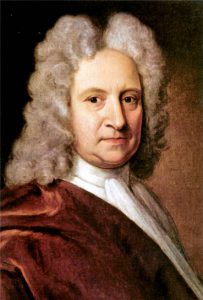 Sometimes, the worst fear is that of the unknown. In 1910, a comet that I’m sure we have all heard of…Halley’s Comet, named after astronomer Edmond Halley, passed by the Earth. The comet only passes by Earth every 76 years or so, but in 1910, they weren’t as sure about this whole comet thing. When the word got out that it was going to buzz the planet, a lot of people were interested. People bought telescopes as it got closer. Everyone wanted to see the comet. Hotels even offered special deals, so people could gather on top of their roofs to watch the meteor pass. These were to ones who weren’t too worried.
Sometimes, the worst fear is that of the unknown. In 1910, a comet that I’m sure we have all heard of…Halley’s Comet, named after astronomer Edmond Halley, passed by the Earth. The comet only passes by Earth every 76 years or so, but in 1910, they weren’t as sure about this whole comet thing. When the word got out that it was going to buzz the planet, a lot of people were interested. People bought telescopes as it got closer. Everyone wanted to see the comet. Hotels even offered special deals, so people could gather on top of their roofs to watch the meteor pass. These were to ones who weren’t too worried.
Many other people had every doomsday scenario imaginable in their heads. Maybe they thought it was going to hit the Earth and wipe out all humanity. Apparently, a French astronomer named Camille Flammarion believed the comet’s 24-million-mile long tail contained a poisonous cyanogen gas that “would impregnate the atmosphere and possibly snuff out all life on the planet.” When The New York Times did a piece on Flammarion’s apocalyptic theory, some of the other less-trustworthy newspapers ran with the story, and proceeded to create a panic among the people. What had started out as a run on telescopes, ended up in mass panic and people ransacking stores for gas masks. To make matters worse, con men began selling anti-comet pills, and some people worried the comet would “cause the Pacific to change basins with the Atlantic” and turn the world into “one heterogeneous mass of chaotic  confusion.” People flocked to the churches to pray, and according to science writer Matt Simon, some people actually sealed up their keyholes to keep poison out of their homes.
confusion.” People flocked to the churches to pray, and according to science writer Matt Simon, some people actually sealed up their keyholes to keep poison out of their homes.
In the end, people found that their panic was as unnecessary, and the gas masks were. There was no poison. There were a few people who blamed King Edward VII’s death on the comet, bit there was no evidence of science backing that claim. Interestingly, Mark Twain also passed away as the comet flew overhead. That’s extra weird considering he was born as the comet last flew by, in 1835. Of course, that is just a coincidence, although quite interesting.
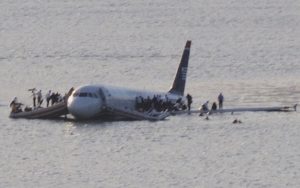
 Most of us have heard about the bird strike that brought down US Airways Flight 1549 in the Hudson River off Manhattan, after both engines were disabled by a bird strike on January 15, 2009. The birds were just flying along…minding their own business. Then suddenly, there was a plane…right in their path. So my thought is what were the birds thinking in that instant before their death. I don’t mean to sound morbid, but I do believe animals can think, and like humans, they might be thinking, “Oh boy…this is it!!” And it was.
Most of us have heard about the bird strike that brought down US Airways Flight 1549 in the Hudson River off Manhattan, after both engines were disabled by a bird strike on January 15, 2009. The birds were just flying along…minding their own business. Then suddenly, there was a plane…right in their path. So my thought is what were the birds thinking in that instant before their death. I don’t mean to sound morbid, but I do believe animals can think, and like humans, they might be thinking, “Oh boy…this is it!!” And it was.
In the world of NASA Kennedy Space Center in Florida, birds are a part of the territory too. NASA usually takes their feathered intruders in stride, and in turn, the birds provide an extra level of interest in launch photography. For NASA the bird problem can be largely attributed to the nearby Merritt Island National Wildlife Refuge’s 310 species of birds that love to swoop through for a visit. Most of the time it’s no big deal, but when they start poking around during a launch, it can be a bit more problematic.
Many of the bird species are not a problem, but one particular type of bird is causing concern for NASA…vultures. In 2005, they had a bird hit Discovery’s external tank during the launch. A vulture’s average weight ranges from 3 to 5 pounds, so a strike at a critical point on the shuttle…like the nose or wing leading thermal protection panels could cause catastrophic damage to the vehicle. The foam chunk that fatefully struck Columbia’s wing in 2003 weighed only 1.7 pounds. Even with the space shuttle launches cancelled, there are still launches at the Kennedy Space Center, and something needs to be done to protect the astronauts, rockets, and equipment, as well as the birds from the harm that occurs when nature collides with NASA. That said, NASA designed special radar to track any vultures around Launch Pad 39B during the countdown to liftoff of Space Shuttle Discovery on mission STS-121. NASA is also trying to clean up anything, like “roadkill” around Kennedy in an effort to prevent the birds being drawn to the area. They are removing the easy food source that keeps the birds around.

Vultures search for food during the day, often circle high into the Florida sky, floating on the thermal gradients, getting a birds-eye view of food sources. To mitigate the danger, an avian radar system known as “Aircraft Birdstrike Avoidance Radar” has been installed to track their movement around the launch area and relay the data to launch control experts. The system was developed by a company called DeTect of Panama City, Florida, which primarily has served the commercial aviation industry and the military. Hopefully the radar can give the launch team locations in real-time so decisions can be made to avoid bird strikes in the future.

 I have always loved watching birds in flight, especially when they are playing as they fly. They swoop, dive, and chase each other across the sky. We used to have pigeons downtown that played like that, but now they have moved near, or rather right over the trail I like to walk on. Since I don’t go downtown much, you can imagine how delighted I am that they have moved. Pigeons, while fun to watch truly have nothing on the Common Starling when it comes to play. The first time I saw a group of starlings in flight, I was stunned. They moved as one, swooping and diving. It looked like a cloud in the sky, but the cloud would have to be alive, which of course, it was, but not in the way you might think. The cloud was the birds, and their dance is beautiful. It was almost surreal, but it was very real.
I have always loved watching birds in flight, especially when they are playing as they fly. They swoop, dive, and chase each other across the sky. We used to have pigeons downtown that played like that, but now they have moved near, or rather right over the trail I like to walk on. Since I don’t go downtown much, you can imagine how delighted I am that they have moved. Pigeons, while fun to watch truly have nothing on the Common Starling when it comes to play. The first time I saw a group of starlings in flight, I was stunned. They moved as one, swooping and diving. It looked like a cloud in the sky, but the cloud would have to be alive, which of course, it was, but not in the way you might think. The cloud was the birds, and their dance is beautiful. It was almost surreal, but it was very real.
This group “dance” is actually called a murmuration, and it doesn’t happen every day. Starling murmurations only happen when the birds start to roost…as early as September in some places, and as late as the end of November elsewhere, with more birds joining the nightly displays during this time. Starlings usually perform their aerial acrobatics at dusk, just above their communal roosting sites before they bed down for the night. I suppose it is a joyful display, because they are preparing to have their young. That is not the only reason starlings murmurate, however. Murmuration can also be used as a defense mechanism. The idea for defense is that as a closely packed flock, can appear to it’s enemies as being much larger than any single bird could possibility appear. Grouping together in the sky does offer protection from predators like peregrine falcons, but the birds also murmurate to keep warm and exchange information on feeding sites. It’s like a natural version of social networking, I guess…with the exception of no computer.
The Starling prefers to nest in sheltered spots, away from predators, but that is not always possible. Often they 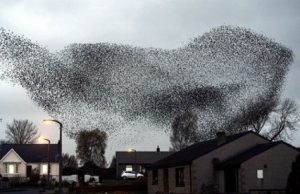
 nest in “woodlands, but reedbeds, cliffs, buildings and industrial structures are also used. During the day however, they form daytime roosts at exposed places such as treetops, where the birds have good all-round visibility.” They need to be able to keep a watch to protect themselves from prey. The habits of birds has always been interesting, but the Starling is perhaps the most interesting of all the birds I’ve seen.
nest in “woodlands, but reedbeds, cliffs, buildings and industrial structures are also used. During the day however, they form daytime roosts at exposed places such as treetops, where the birds have good all-round visibility.” They need to be able to keep a watch to protect themselves from prey. The habits of birds has always been interesting, but the Starling is perhaps the most interesting of all the birds I’ve seen.
 I have never been caught up in a serious earthquake, and I don’t think I want to, but stories of survival in an earthquake, are always filled with hope. Earthquakes remain the one natural disaster that the scientists can’t successfully predict. They may make the attempt, but any earthquake that comes on or near the date predicted, is coincidental. They might come close one time, but totally miss it the next. Earthquakes simply confound the scientists. The Avezzano Earthquake near Avezzano, Italy was no exception.
I have never been caught up in a serious earthquake, and I don’t think I want to, but stories of survival in an earthquake, are always filled with hope. Earthquakes remain the one natural disaster that the scientists can’t successfully predict. They may make the attempt, but any earthquake that comes on or near the date predicted, is coincidental. They might come close one time, but totally miss it the next. Earthquakes simply confound the scientists. The Avezzano Earthquake near Avezzano, Italy was no exception.
At 7:49am on January 13, 1915, the people in the Marsica area, a suburb of Avezzano, were going about their day…business as usual, but at 7:50am everything changed. It was a clear, cold morning, after a hard winter night during which the Northern wind blew through the area with a display of crazy violence from dusk until dawn. One survivor had been running errands, and when he came back, he found his brother and cousin sitting by the 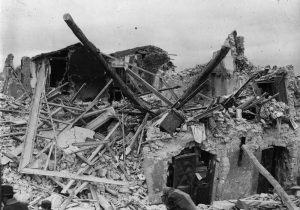 fireplace, while his mother was busy preparing milk and coffee for her two boys. The younger brother would be heading to school after breakfast, but 15 minutes later at 7:50am, the earth started to rumble around them.
fireplace, while his mother was busy preparing milk and coffee for her two boys. The younger brother would be heading to school after breakfast, but 15 minutes later at 7:50am, the earth started to rumble around them.
It didn’t matter that it was 1915, because there are no warning systems for earthquakes in this day and age either. The only thing that might have made a difference would have been buildings that were more earthquake proof. Still, it seems that deaths during earthquakes can happen even if the buildings are earthquake proof. The magnitude 6.7 earthquake destroyed the city. Often we think of an earthquake that brings that much destruction being of far greater magnitude than a 6.7 and maybe the stability of the buildings was the problem. People woke up with debris on them, finding it hard to breathe. Families were ripped apart. Some 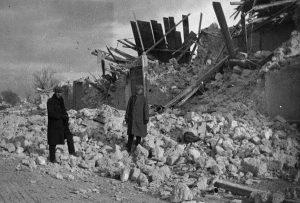 lived and some died. The city and the surrounding area was in mourning.
lived and some died. The city and the surrounding area was in mourning.
When the people came outside, a terrifying sight greeted them. There was a huge greyish cloud that was hanging over the suburbs. The city below the cloud was flattened. The air was filled with the acrid smell of old plaster, and the screams and cries of people who were trapped or had found their loved ones deceased. The city was in despair. Death was everywhere. Beloved, historic buildings were gone…many of which had been thought to be indestructible. The total loss of life in the 1915 Avezzano earthquake was 30,000 people. The financial loss was $60 million.
 Our enemies really depend on the war we are in. In World War II, Russia was on the side of the United States. While they might not have really been our ally, they weren’t really our enemy either, so I guess they were our “frienemy.” In reality, they were in just as much danger as any other member of the Allies. Germany had made a deal with them, but then invaded them anyway. World War II was a fear-filled time. It was a hard-fought war, against terrible enemies. There were times that it looked like Hitler would win, but in the end, he did not, and as far as history knows, he committed suicide, along with his wife, Eve Braun Hitler, who married him the day before.
Our enemies really depend on the war we are in. In World War II, Russia was on the side of the United States. While they might not have really been our ally, they weren’t really our enemy either, so I guess they were our “frienemy.” In reality, they were in just as much danger as any other member of the Allies. Germany had made a deal with them, but then invaded them anyway. World War II was a fear-filled time. It was a hard-fought war, against terrible enemies. There were times that it looked like Hitler would win, but in the end, he did not, and as far as history knows, he committed suicide, along with his wife, Eve Braun Hitler, who married him the day before.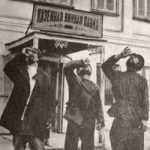
The people of the Soviet Union heard on the radio on May 9, 1945, at 1:10am, that Nazi Germany had signed the act of unconditional surrender. That surrender ended the USSR’s fight on the Eastern Front of World War II, or the Great Patriotic War as the Soviets called it. That war had been devastating consequences…according to official data, the state lost more than 26 million people. It was a great day for Russia and for the world. Hitler was dead, and the world could move forward and begin to heal. It was truly a rare case of an indestructible victory over its worst enemy, and the people of the state began a traditional method of celebration…drinking vodka and toasting to their victory.
The party began that day, May 9, 1945, and continued without ceasing for about 22 hours. People were so excitedly celebrating that they really didn’t think about their condition. They went outside in their pajamas, 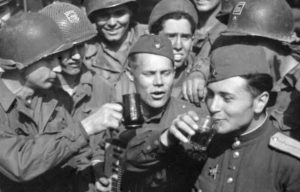 embraced, and wept with happiness. They didn’t care if they were in their pajamas, they were elated, and they partied. In fact, even non-drinkers began to drink. The party came to a screeching halt 22 hours later when the wartime deficiency of vodka, led to a unique situation. The party was in full swing, and when Joseph Stalin stepped up to address the nation in honor of the victory, the population had drunk all the vodka reserves in the country. I don’t think people really cared at that point what they toasted with. They would gladly lift a glass of water to cheer the victory. Nevertheless, how often does an entire nation run out of liquor…unless the nation is in prohibition, that is?
embraced, and wept with happiness. They didn’t care if they were in their pajamas, they were elated, and they partied. In fact, even non-drinkers began to drink. The party came to a screeching halt 22 hours later when the wartime deficiency of vodka, led to a unique situation. The party was in full swing, and when Joseph Stalin stepped up to address the nation in honor of the victory, the population had drunk all the vodka reserves in the country. I don’t think people really cared at that point what they toasted with. They would gladly lift a glass of water to cheer the victory. Nevertheless, how often does an entire nation run out of liquor…unless the nation is in prohibition, that is?
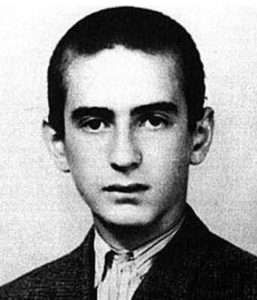
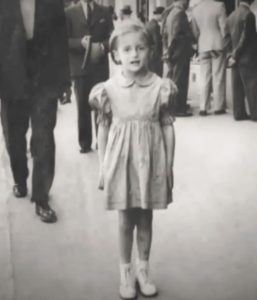 When we look at the events of the Holocaust, we find ourselves looking through the eyes of those who were resigned to their fate. Some even felt like this was what they were born for and nothing could possibly change that. One Holocaust survivor, Eliezer “Elie” Wiesel, who was born in Sighet, Romania, on September 30, 1928 expressed that very sentiment concerning his time as a prisoner of the Nazi Regime. Wiesel’s early life was fairly normal, as it was a fairly peaceful time for the Jewish people. He was part of an average Jewish family consisting of his mother, father, and three sisters, but all that came to a screeching halt in 1944, when they were shipped off to the Auschwitz concentration camp in Poland. The Holocaust experience was so horrific and such an assault on both his body and mind, that it defined his life. He couldn’t even stand to talk about much of it for over 60 years.
When we look at the events of the Holocaust, we find ourselves looking through the eyes of those who were resigned to their fate. Some even felt like this was what they were born for and nothing could possibly change that. One Holocaust survivor, Eliezer “Elie” Wiesel, who was born in Sighet, Romania, on September 30, 1928 expressed that very sentiment concerning his time as a prisoner of the Nazi Regime. Wiesel’s early life was fairly normal, as it was a fairly peaceful time for the Jewish people. He was part of an average Jewish family consisting of his mother, father, and three sisters, but all that came to a screeching halt in 1944, when they were shipped off to the Auschwitz concentration camp in Poland. The Holocaust experience was so horrific and such an assault on both his body and mind, that it defined his life. He couldn’t even stand to talk about much of it for over 60 years.
Wiesel, when he could finally speak of the atrocious acts he and others were subjected to, told of how the Nazi Regime conditioned the prisoners in the camps to believe that their future was what it was, and that they had no say in it. When his own father was beaten in front of him, Wiesel just stood there. He was horrified, but he didn’t move…he didn’t dare. For years that life moment haunted him. His father told him that it wasn’t so bad, but as his father’s son, Wiesel knew he should have done something. Nevertheless, he like so many other Jewish prisoners of the Nazi Regime, was made to understand that the killer (Nazis) came to kill, and the victim (Jews) came to be killed…like it was their destiny from the beginning of time. Somehow they were taught that this was the reason they were born. They are expected to believe that that their life had no other purpose, and that their voice didn’t matter…that their lives didn’t matter.
Wiesel’s ordeal really began in 1940, at age 12, when Hungary, which was in alliance with Nazi Germany, annexed his hometown of Sighet, Romania…although he didn’t know it then. At first things seemed ok, but then all the Jews in the city were forced into a ghetto. This was the story so many Jews shared. By 1944, when Elie was 15, Hungary colluded with Germany to deport all residents of the ghetto to the Auschwitz-Birkenau concentration camp, in Poland. They were trucked out of their homes, their possessions stolen, and then they were packed into a cattle car on a train. It was so tight that they had to stand up the whole trip. They had no food or water, and no restroom facilities. It was terribly degrading. Upon arrival at Auschwitz, Elie’s mother, Sarah, and youngest sister, Tzipora, were killed, and he and his father, Shlomo, were separated from his other sisters, Hilda and Beatrice. Elie and Shlomo were transferred to Buchenwald concentration camp, where his father died.
Then came some of the worst scenes he can remember. Wiesel describes it this way: “Not far from us, flames, huge flames, were rising from a ditch. Something was being burned there. A truck drew close and unloaded its hold: small children. Babies! Yes, I did see this, with my own eyes…children thrown into the flames. (Is it any wonder that ever since then, sleep tends to elude me?)” Wiesel battled with immense guilt and the ugliness of humanity for most of his life after surviving the Holocaust. Nevertheless, Wiesel was devoted to combating indifference, intolerance, and injustice. He became an accomplished writer, professor, and overall champion for human rights. Finally on April 16, 1945, American military personnel liberated the Buchenwald concentration camp. The survivors were barely alive, and even solid food ran the risk of causing their death, because their digestive systems were not prepared for much food, even though they were starving. The soldiers didn’t know the consequences, and gave them chocolate bars. The results were disastrous. They finally had to stop giving them anything, which was just as hard, if not harder than the problems caused by feeding them.
Thinking his family was gone, Wiesel eventually made his way to Paris, where he enrolled in the Sorbonne to study literature, philosophy, and psychology. By age 19, he was working as a journalist for a French newspaper, earing $16 per month…a pretty goo wage in those days. A few years later, in 1949, he was sent to Israel, to cover the early days of the new nation. Wiesel found out that two of his sisters survived, when his sister, Hilda saw his picture in a newspaper. While Elie was living in a French orphanage in 1947, a journalist took his photo, and it was published in the French newspaper where Hilda saw it. In an interview in 2000, Wiesel admitted he thought all his sisters had died in the Holocaust. “When I was still in Buchenwald, I studied the lists of survivors, and my sisters’ names were not there. That’s why I went to France…otherwise I would have gone back to my hometown of Sighet. In France, a clerk in an office at the orphanage told me that he had talked with my sister, who was looking for me. ‘That’s impossible!’ I told him. ‘How would she even know I am in France?’ But he insisted that she’d told him that she would be waiting for me in Paris the next day. I didn’t sleep that night. The next day, I went to Paris, and there was my older sister! After our liberation, she had 
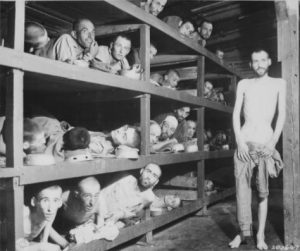 gotten engaged and gone to France, because she thought I was dead too. Then one day she opened the paper and saw my picture [a journalist had come to the orphanage to take pictures and write a story]. If it hadn’t been for that, it may have been years before we met. My other sister had gone back to our hometown after our release, thinking that I might be there.” The following year, Elie reunited with Beatrice, in Antwerp, Belgium. She eventually emigrated to Canada, where she lived for the rest of her life. Elie Wiesel passed away on July 2, 2016.
gotten engaged and gone to France, because she thought I was dead too. Then one day she opened the paper and saw my picture [a journalist had come to the orphanage to take pictures and write a story]. If it hadn’t been for that, it may have been years before we met. My other sister had gone back to our hometown after our release, thinking that I might be there.” The following year, Elie reunited with Beatrice, in Antwerp, Belgium. She eventually emigrated to Canada, where she lived for the rest of her life. Elie Wiesel passed away on July 2, 2016.
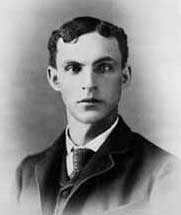
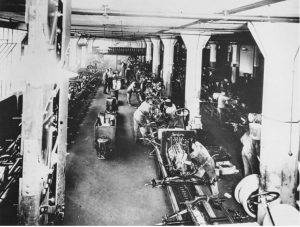 These days, everyone is fighting for a higher minimum wage, but in may years gone by, people were happy to get what little they were given. The Great Depression was one of those times for sure, but there were others. On January 5, 1914, Henry Ford and his vice president James Couzens absolutely stunned the world when they announced that Ford Motor Company would double its workers’ wages to five dollars a day. Now in this day and age, the workers would just go out and look for another job if that was offered, but back then, they were all going to be rich!! Of course, newspapers around the world were gushing with the great news. The notion of a wealthy industrialist sharing profits with workers on such a scale was unprecedented. Everyone wanted to work for Ford.
These days, everyone is fighting for a higher minimum wage, but in may years gone by, people were happy to get what little they were given. The Great Depression was one of those times for sure, but there were others. On January 5, 1914, Henry Ford and his vice president James Couzens absolutely stunned the world when they announced that Ford Motor Company would double its workers’ wages to five dollars a day. Now in this day and age, the workers would just go out and look for another job if that was offered, but back then, they were all going to be rich!! Of course, newspapers around the world were gushing with the great news. The notion of a wealthy industrialist sharing profits with workers on such a scale was unprecedented. Everyone wanted to work for Ford.
In the century since, many people have theorized that the increased pay was to justify assembly line speed-ups, while others speculated it was to counteract high labor turnover due to increasingly monotonous assembly line work. Those who were fans of Ford called it pure philanthropy. Those who didn’t like Ford called it little more than an elaborate publicity stunt…maybe to gain fame or to brag about his successes, but the truth was likely a little of both. A successful boss should share his successes with those who helped him to achieve the level of success he has gained. Of course, not all do, and my guess is that those who wouldn’t do that are the ones who screamed the loudest. There is no pain in business bigger that when someone does the right thing when you won’t.
In order to really understand why Ford implemented the Five-Dollar Day, one must realize that his advances in the moving assembly line, and experiments through 1913 and into 1914 reduced the time required to build a Model T automobile from 12½ hours to just 93 minutes. Increased efficiencies lowered production costs, which lowered customer prices, which increased demand. The public was eager to buy all of the cars Ford could build. That meant that he needed to increase production, and good help is always hard to find. When you find good workers, you should pay them well. Explosive production gains came at the cost of worker satisfaction. The workers were skilled in their little area of the project, and after a while, doing the same job over and over again can get monotonous. The very goal of the moving assembly line was to take what had been relatively skilled craftwork and reduce it to simple, rote tasks. Workers who had previously taken pride in their skilled labor were quickly bored, and some took to lateness and absenteeism. Many simply quit, and Ford found itself with a crippling labor turnover rate of 370 percent. The assembly line was a great invention, but it was hard on the workers, and the assembly line depended on a steady crew to run it. Training replacements was expensive and time consuming, so Ford decided that a bigger paychecks might make the factory’s tedious labor more tolerable.
The increased wages may have seemed like the best solution, but it backfired in a way. The need to retain workers and the subsequent Five-Dollar Day as an effort to do so, worked too well in the end. Within days of the announcement, thousands of applicants came to Detroit from all over the Midwest. They parked at Ford’s gate, and immediately overwhelmed the company. Riots broke out, and the crowds were turned away with fire hoses in the icy January weather. To overcome the problem, Ford announced that it would only hire workers who had lived in Detroit for at least six months. Finally, the rioting stopped and peace returned to the area. Of course, for those who had jobs at Ford, there was the “fine print” to deal with If you made $2.30 a day under the old pay schedule, for example, you still made that wage under the Five-Dollar plan, but if you met all of the company’s requirements, Ford gave you a bonus of $2.70. I don’t suppose that garnered a lot of good feelings either. Many people couldn’t wrap their minds around the profit-sharing plan. They needed the money now.
Part of Henry Ford’s reasoning behind the Five-Dollar Day was that workers who were troubled by money problems at home would be distracted on the job. If higher pay was intended to eliminate these problems, then Ford would make sure that his employees were using his gift “properly.” The company established a Sociological Department to monitor its employees’ habits beyond the workplace. “To qualify for the pay increase, workers had to abstain from alcohol, not physically abuse their families, not take in boarders, keep their homes clean, and contribute regularly to a savings account. Moral righteousness and prudent saving were all well and good, but they were not generally an employer’s business…at least not outside of working hours. In contrast, Ford Motor Company inspectors came to workers’ homes, asked probing questions, and observed general living conditions. If ‘violations’ were discovered, the inspectors offered advice and pointed the families to resources 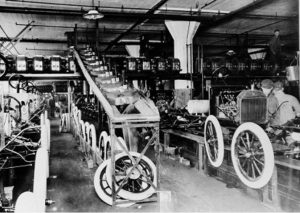
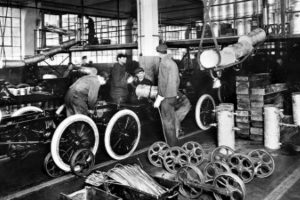 offered through the company. Not until these problems were corrected did the employee receive his full bonus.” At this point, I would have to say that the company was taking far too much control. Many others agreed, and by 1921, the Sociological Department was largely dissolved. The Five-Dollar Day was a good idea in the beginning, but in the end, it was one that just got a little out of control.
offered through the company. Not until these problems were corrected did the employee receive his full bonus.” At this point, I would have to say that the company was taking far too much control. Many others agreed, and by 1921, the Sociological Department was largely dissolved. The Five-Dollar Day was a good idea in the beginning, but in the end, it was one that just got a little out of control.
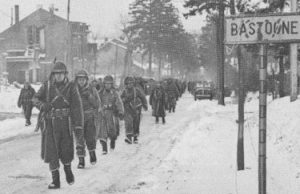
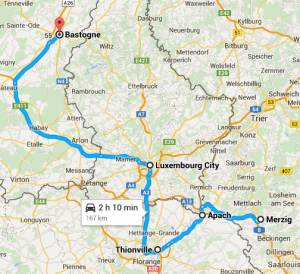 The Battle of the Bulge has been a brutal, hard-fought battle. The soldiers were tired, cold, and hungry; and all they wanted was a night off to recharge. That was not to be. They had more pressing matters to attend to, and the fate of the free world might just depend on their success. The Germans had achieved a total surprise attack on the Belgian town of Bastogne, on the morning of December 16, 1944, due to a combination of Allied overconfidence, preoccupation with Allied offensive plans, and poor aerial reconnaissance because to bad weather. The American forces, specifically the US 101st Airborne Division bore the brunt of the attack and incurred their highest casualties of any operation during the war. The town was vital to the Germans, because it would open up a valuable pathway further north for German expansion. The siege had to be stopped, and the 101st Airborne Division needed help to do it.
The Battle of the Bulge has been a brutal, hard-fought battle. The soldiers were tired, cold, and hungry; and all they wanted was a night off to recharge. That was not to be. They had more pressing matters to attend to, and the fate of the free world might just depend on their success. The Germans had achieved a total surprise attack on the Belgian town of Bastogne, on the morning of December 16, 1944, due to a combination of Allied overconfidence, preoccupation with Allied offensive plans, and poor aerial reconnaissance because to bad weather. The American forces, specifically the US 101st Airborne Division bore the brunt of the attack and incurred their highest casualties of any operation during the war. The town was vital to the Germans, because it would open up a valuable pathway further north for German expansion. The siege had to be stopped, and the 101st Airborne Division needed help to do it.
The capture of Bastogne was the ultimate goal of the Battle of the Bulge…the German offensive through the Ardennes forest. Bastogne provided a road junction in rough terrain where few roads existed. The Belgian town was defended by the US 101st Airborne Division, which had to be reinforced by troops who straggled in from other battlefields. Food, medical supplies, and other resources eroded as bad weather and relentless German assaults threatened the Americans’ ability to hold out. Nevertheless, Brigadier General Anthony C MacAuliffe met a German surrender demand with a typewritten response of a single word, “Nuts.”
This was as bad as it gets, and they needed a hero. Enter “Old Blood and Guts” Patton. General George S Patton Jr was a “street fighter” of a general. He knew what it took to win, and he refused to lose. He was the kind of leader any army, and indeed any government needed. Patton made the decision, the only possible decision he could make. The plan was a “complex and quick-witted strategy wherein he literally wheeled his 3rd Army a sharp 90° turn in a counterthrust movement.” It sounds like a simple plan, but there is no more risk-laden battlefield maneuver than a 90° turn and then a move across and perpendicular to their own lines of communication. The possibilities of mistakes being make were endless. Still, Patton told his men that lives depended on them, and they needed to be in Bastogne…100 miles away, in five days. Not only that, but the march would be over a mountain pass in frigid temperatures. It seemed an impossible 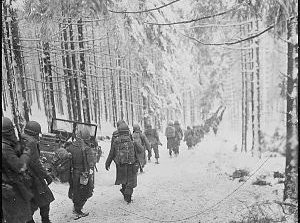
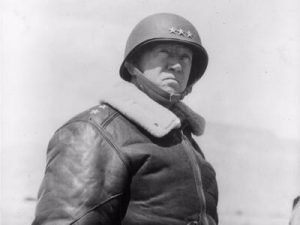 task, but two days later, Patton broke through the German lines and entered Bastogne, relieving the valiant defenders and ultimately pushing the Germans east across the Rhine. I think that if this mission had been asked of any other general, the results might not have been so great. There are generals in war who may annoy everyone around them, but when it comes to doing what is best for the people in trouble, you don’t want anyone else to do the job.
task, but two days later, Patton broke through the German lines and entered Bastogne, relieving the valiant defenders and ultimately pushing the Germans east across the Rhine. I think that if this mission had been asked of any other general, the results might not have been so great. There are generals in war who may annoy everyone around them, but when it comes to doing what is best for the people in trouble, you don’t want anyone else to do the job.

 Most of the time, Christmas is a time filled with tradition. Many families celebrate it in exactly the same way every year. Of course, the most important thing about Christmas is the celebration of the birth of Jesus. When I think of where this world would be if Jesus had never come down from Heaven to save us from our own sins, I feel such thankfulness. We needed Him, and He came. No one really knows what day Jesus was born, but in reality, that part doesn’t really matter, but rather the fact that he was born.
Most of the time, Christmas is a time filled with tradition. Many families celebrate it in exactly the same way every year. Of course, the most important thing about Christmas is the celebration of the birth of Jesus. When I think of where this world would be if Jesus had never come down from Heaven to save us from our own sins, I feel such thankfulness. We needed Him, and He came. No one really knows what day Jesus was born, but in reality, that part doesn’t really matter, but rather the fact that he was born.
This Christmas, for many people has been different than any other Christmas we have had before. Most us us weren’t alive in 1918 when the Spanish Flu Pandemic brought quarantine to many places in the world. I don’t know if things were as locked down as they are this year, but those who were ill, could not be with other people, and so their families were separated, as many are now. It makes for a Christmas that doesn’t feel like Christmas. Still, we have to remember the reason for the season, and not the things we have lost. John 3:16 says, “For God so loved the world, that he gave his only begotten Son, that whosoever believeth in him should not perish, but have everlasting life.” Without Jesus, we were doomed. With Him we have victory and everlasting life. What a wonderful reason to celebrate His birthday. He is the Savior of the World, and His way is so easy for us to follow.
Like it or not, this Christmas brings us to the beginning of the last week of a horrible year, and one the likes of which many of us hope never to go through again. January of 2020 found us facing the beginning of the pandemic, and by March we were in quarantine, and the economy was shut down. The year got steadily worse until many of us found ourselves 
 weary, and ready to start a new year. For my family, that has not changed. We are really ready for 2021. Even today was a sad day, but I will tell of that story tomorrow. I believe the new year will be much better, and as bad as 2020 has been, I am very optimistic for the new year, not for any political or human reason, but because I believe that God is good to us and because he sent His son to die for us, He will not leave us without hope. Therefore I will have hope for 2021. Merry Christmas to all!!
weary, and ready to start a new year. For my family, that has not changed. We are really ready for 2021. Even today was a sad day, but I will tell of that story tomorrow. I believe the new year will be much better, and as bad as 2020 has been, I am very optimistic for the new year, not for any political or human reason, but because I believe that God is good to us and because he sent His son to die for us, He will not leave us without hope. Therefore I will have hope for 2021. Merry Christmas to all!!

